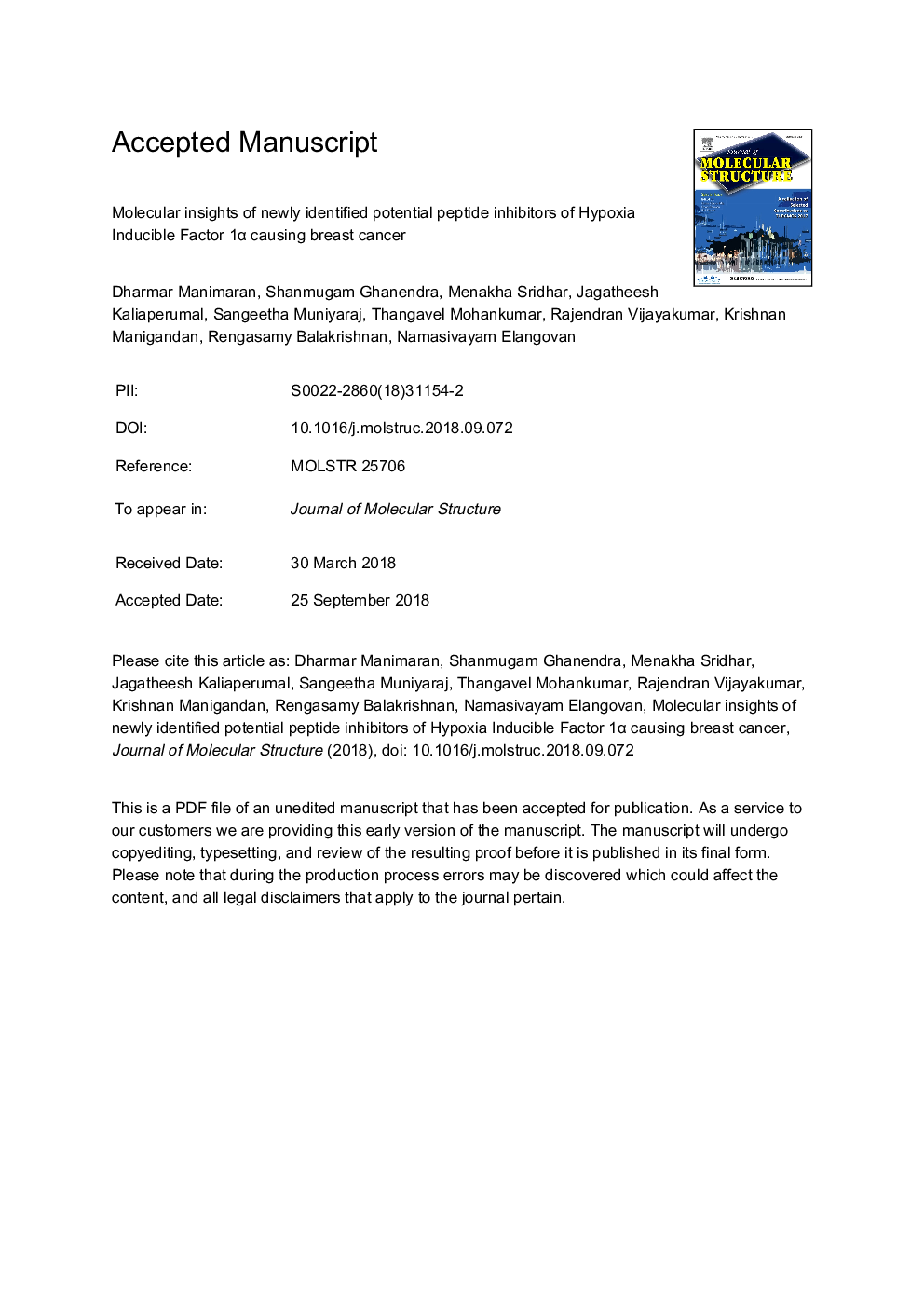| Article ID | Journal | Published Year | Pages | File Type |
|---|---|---|---|---|
| 11027168 | Journal of Molecular Structure | 2019 | 46 Pages |
Abstract
Breast cancer is one of the leading cancer types in women across the world. Computer aided drug designing have been widely applied for drug development and discovery of potential drug molecule of many over expressed proteins induced in breast cancer. In the present study HIF-1α is targeted as receptor and peptides targeted as ligands through protein-protein interaction. A total of 352 peptides were docked with the predicted binding sites of HIF-1α and found that 9 peptides exhibited encouraging binding and docking energy. The maximum docking interactions score of â38.15â¯kJ/mol was observed between a peptide FALALKA and HIF-1α. By analyzing docking study results, amino acid Aspartic acid (Asp 187) play a crucial role forming H-bond and hydrophobic interactions with all the 9 peptides. Taken together, the results of present findings throws light on the design of novel HIF-1α antagonist peptides and aspartic acid could considered during its design for implying its action as a best antagonist against the HIF-1α receptor.
Related Topics
Physical Sciences and Engineering
Chemistry
Organic Chemistry
Authors
Dharmar Manimaran, Shanmugam Ghanendra, Menakha Sridhar, Jagatheesh Kaliaperumal, Sangeetha Muniyaraj, Thangavel Mohankumar, Rajendran Vijayakumar, Krishnan Manigandan, Rengasamy Balakrishnan, Namasivayam Elangovan,
